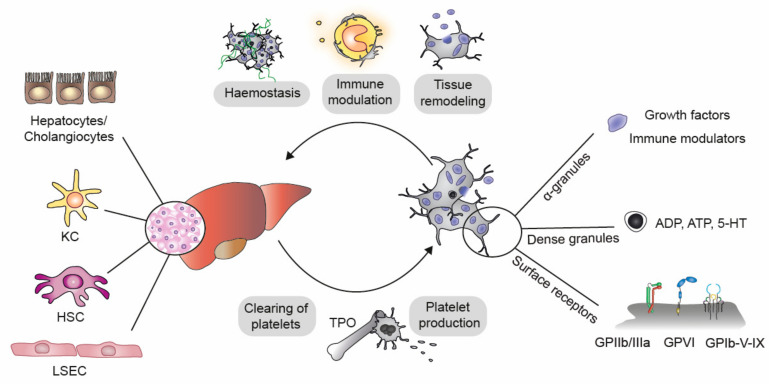Figure 1.
Interactions between liver and platelets. The liver consists of parenchymal (90% hepatocytes) and non-parenchymal cells (2–3% cholangiocytes, 2.5% liver sinusoidal endothelial cells [LSEC], 2% Kupffer cells [KC] and 1.4% hepatic stellate cells [HSC]) [7]. Parenchymal cells secrete thrombopoietin (TPO), which stimulates platelet production and maturation. The liver is further involved in platelet clearance. Platelets modulate liver functions by the release of α- and dense granules, which contain growth factors and immune modulators as well adenosine diphosphate (ADP), adenosine triphosphate (ATP) and serotonin (5-HT), respectively. Platelet surface receptors (GPIIb/IIIa, GPVI, GPIb-V-IV) allow interactions with hepatic cells and extracellular matrix components, which initiates tissue remodeling and hemostasis and promotes immune modulation.

